Features of pruning a climbing rose
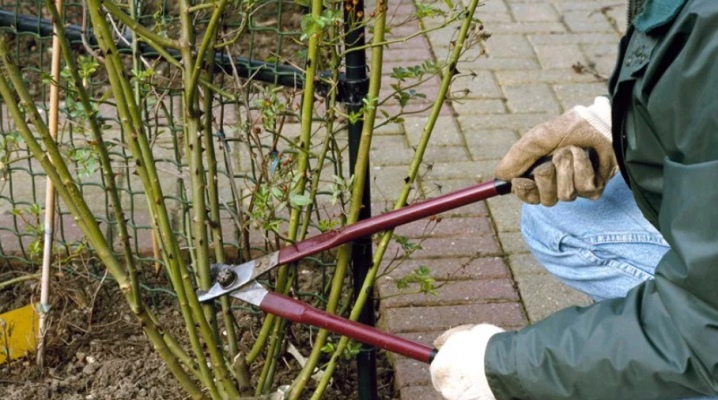
Climbing roses, despite the peculiarities of their development, also require pruning, like ordinary varieties. It is necessary to process bushes with a pruner several times per season.
The need for a procedure
Pruning a climbing rose is a simple but very useful procedure. It is carried out not only to stimulate the appearance of flowers and the formation of a beautiful bush, but also to perform a number of other tasks. So, as a result of pruning, a strong and reliable skeletal base is formed in a rose growing in open ground. Shoots that are not productive are eliminated, and the emergence of strong replacement branches, on the contrary, is stimulated. It turns out that by cutting off the oldest branches, the gardener helps the bush to release young shoots.
The procedure allows you to remove dull flowers, as well as to sanitize, saving the plant from broken or diseased parts. For re-flowering varieties, removing dead buds helps prepare for the second wave of flowering without wasting energy on fruit ripening.
Of course, timely pruning of a climbing rose prevents the strong growth of the bush, which not only leads to thickening and, accordingly, a lack of light and air, but also makes it difficult for the gardener to access internal branches. Pruning, carried out in the fall, becomes part of the preparation of the plant for wintering.

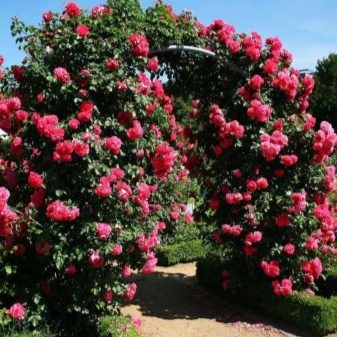
Timing
The exact timing of pruning a climbing rose is determined depending on the climatic characteristics of the region. However, it is still possible to identify some patterns. The procedure is carried out in the spring as soon as the covering material is removed from the bushes - approximately at the beginning of March. It should be in time before the activation of the kidneys, the beginning of sap flow and the appearance of leaves.
Pruning in summer aims to control flowering. In once flowering plants, it stimulates the normal development of replacement branches, on which buds will open in the next season, and for re-flowering plants it will provide a good quality of the second wave of flowering.
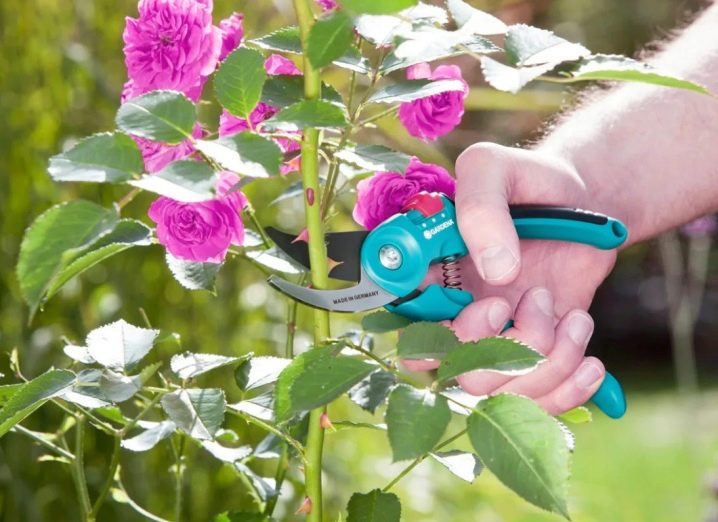
Summer pruning of single-flowering varieties is carried out immediately after flowering, which usually occurs in July-August. In re-flowering varieties, after the first wave, only dried buds are removed. After the second stage of flowering, no cutting is done. It should be mentioned that in the middle of summer, if the plant does not develop young branches well, you can additionally stimulate them by placing the young branches horizontally or huddling the bushes to a height of 30-40 centimeters.
You need to prepare roses for the winter in several stages. At the end of August or at the beginning of September, all growing shoots are pinched, and in October sanitary pruning is already carried out.
It should be mentioned that after planting, special pruning of roses is not required - it will be enough to remove dried, weakened and damaged stems.
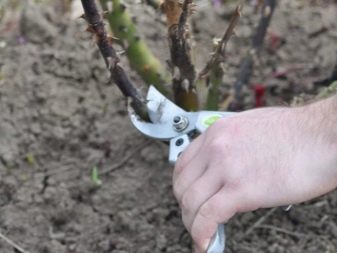

Views
There are several options for pruning a climbing rose.
Sanitary
As a result of sanitary pruning, the bush is cleared of diseased, frozen, deformed or damaged parts. Blackened and brown twigs, as well as those that have become covered with brown spots, are subject to elimination. It is customary to carry out this procedure in the spring, so that in May the bush will be covered with bright foliage, and in June it will form large buds. It is extremely important for the gardener to be able to identify the damaged parts of the rose by eye in order to eliminate them before the juices move. For example, frozen branches are revealed due to blackened "eyes" and increased fragility. All damaged parts are trimmed in stages to healthy wood.
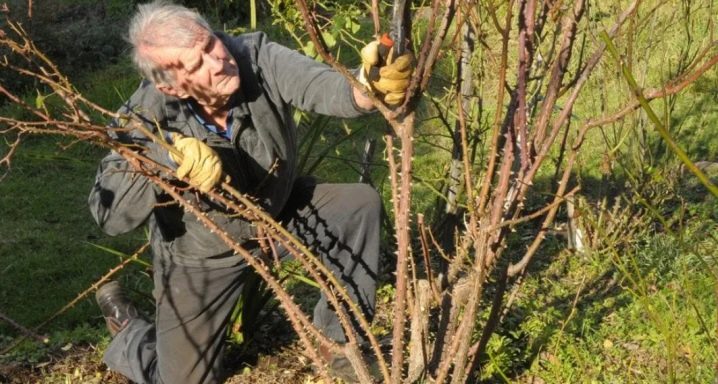
Rejuvenating
As part of rejuvenating pruning, part of the crown is removed in order to create new replacement shoots and prolong the life of the culture. In other words, it is possible to rejuvenate an old rose by stimulating the growth and development of fresh shoots. This kind of radical procedure is also carried out in the spring.
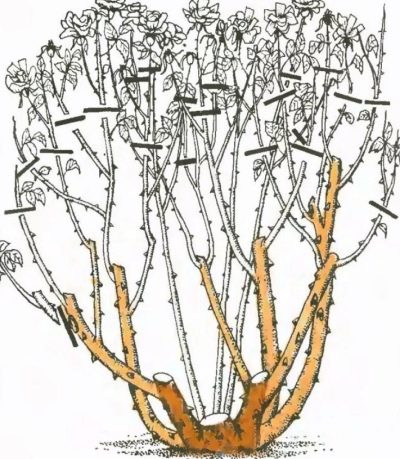
Formative
The shaping procedure allows you to give the plant a neat and aesthetic shape. It can also include supportive pruning to prevent crown thickening. As part of formative pruning, it is customary to remove weak branches in the lower part, and then leave only the strongest from a pair of competing shoots.
The gardener must always adhere to the rule: the weaker the shoot, the more it needs to be shortened, and vice versa.

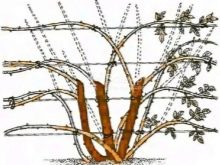
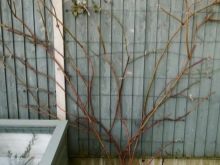
Tools and materials
Climbing roses should only be cut with well-sharpened tools. It is recommended to prepare three devices at once: a special saw, a pruner or brush cutter with an extended handle, as well as a regular pruner. Tools must be disinfected with a weak manganese solution or medical alcohol.
From time to time, they will need to be sharpened, and before harvesting for long winter storage, they should be treated with machine oil or grease.
It is better to use them, having previously protected your hands with gloves. Typically, samples for gardening are made from suede, leather or thick tarpaulin.
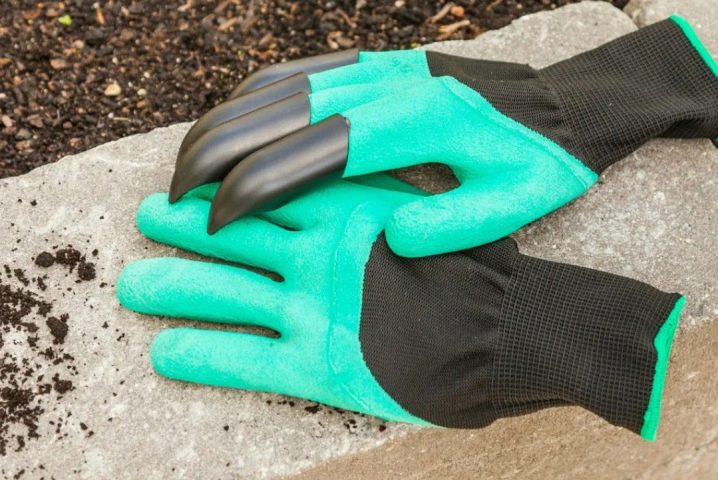
The pruner, which has a pair of cutting blades, is used like a scissor. The tool will allow you to make clean and even cuts without flattening the shoots or provoking delamination of the bark. Experts recommend getting an individual pruner for roses and not using it for other crops, for example, rose hips or raspberries.
A lopper with sturdy handles will help you cope with thick and sturdy shoots. It functions like a lever. The garden saw is used to remove the oldest and thickest branches that cannot be acted upon by other tools.
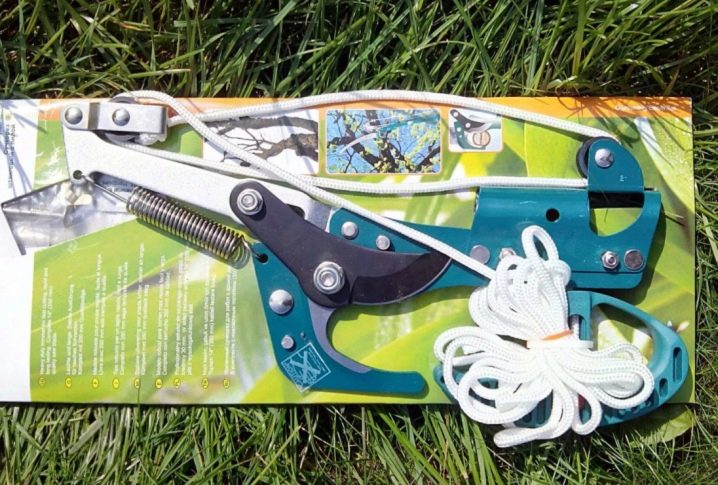
How to trim correctly?
During the spring pruning, the most simple manipulations are to be done. First of all, the bushes are cleaned after a thorough inspection. In climbing roses, all unproductive shoots are removed down to the base or at least to healthy tissues. Only last year's branches will have to be cut in the spring, shortening the tops to the first strong bud. In large-flowered varieties, you can also cut off the lateral branches by 2/3 and reduce the main shoots to support height.
Only re-blooming roses are accepted to rejuvenate in spring. Novice gardeners should remember that 3 to 7 of the best branches are left on the bush as the main shoots, and those parts whose age has exceeded 4 years are completely cut off right at the base. Too dense crown is proposed to thin out from weak branches.
In the summer, when conducting formative pruning, it is necessary to adhere to a certain pattern. Once blooming roses are first freed from old shoots in order to form from 3 to 10 replacement branches in the future. The basal shoots are shortened to the base, and from the young only the skeleton of the strongest branches is left.
Re-flowering varieties are much easier to handle. The faded parts are simply removed before the first shoot of a full-fledged leaf growing above.

During autumn pruning, diseased, damaged or immature shoots are eliminated, as well as those that are unproductive or somehow threaten the health of other branches. It is also customary to shorten young shoots down to old wood.
All work is best done on a dry and sunny day. Shoots should be cut at an angle of 45 degrees, moving in the opposite direction to the bud, and leaving at least 5-8 millimeters of the stem above it. When deciding on the place of the cut, one should focus on the large buds on the outside of the stem, so that the shoots later grow not inside the crown, but outward. It is recommended to leave no more than one shoot from each bud.
The stems at the base of the shrub, covered with small foliage, are cut in any case so that the rose does not "run wild". Upon completion of the procedure, the opened wounds must be covered with garden varnish, copper sulfate or crushed activated carbon. All trimmed parts are removed from the site and burned.

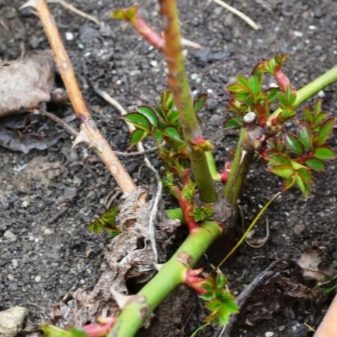
Features of pruning of different varieties
Different varieties of climbing roses are processed according to slightly different instructions. It is customary to cut once flowering ramblers into a ring immediately after flowering. Such an intervention, used mostly in the south, will stimulate the emergence of new shoots in the next season.... In the middle lane, a similar procedure is carried out before wintering. In grafted ramblers, 3-6 shoots are also left, and in self-rooted ones - about 20 pieces. After flowering, the tops of such climbing roses are reduced by 5-7 centimeters.
The main pruning of climbers with large flowers must be arranged in the spring, combined with a sanitary haircut. Within its framework, the lashes are cut to the first strong bud. In summer, at the end of flowering, 1/3 of the length of all shoots is removed. In autumn, old shoots are shortened to a height of 30 centimeters above ground level, and lateral ones are cut to 2-3 buds.
As for the scrubs, light corrective pruning is enough for them: summer - in one-time flowering and in spring - in remontant. The branches of tall bushes are shortened by a third, and low ones by 1.2 meters. All faded buds are also cut off. 3 years after planting, it will also be possible to cut off 1-2 old shoots from scrubs. Ground cover roses in the spring are curly cut, taking the shape of a ball, and get rid of old shoots.
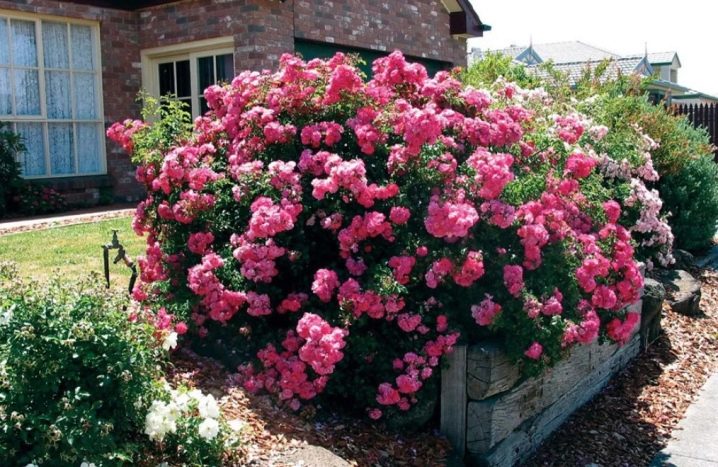
Useful Tips
Upon completion of both spring and summer pruning, the plant should be fed. If the weather is dry outside, then you can immediately irrigate the shrubs for the further development of the shoots. Climbing roses require not only regular pruning, but also support. As the latter, not only special structures can be involved, but also the wall of any structure on the site, a fence, a gazebo or a mesh fence. In order for the flowering of the plant to occur along the entire length of the branches, they have to be fixed only horizontally.
It is important to remember that vertically fixed shoots are covered with buds only at the crown.
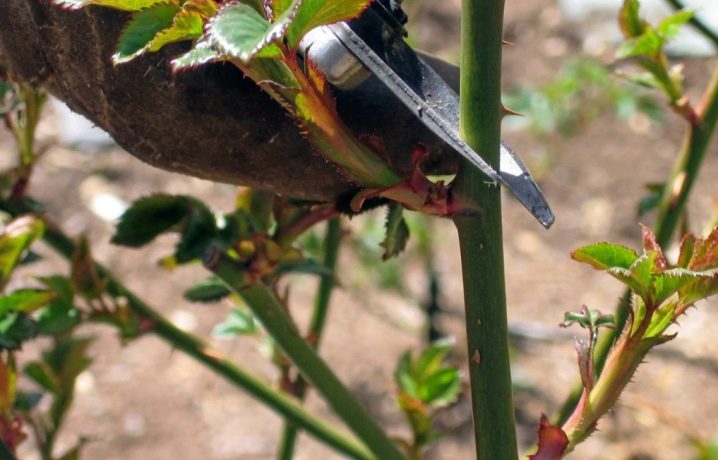

































































































The comment was sent successfully.